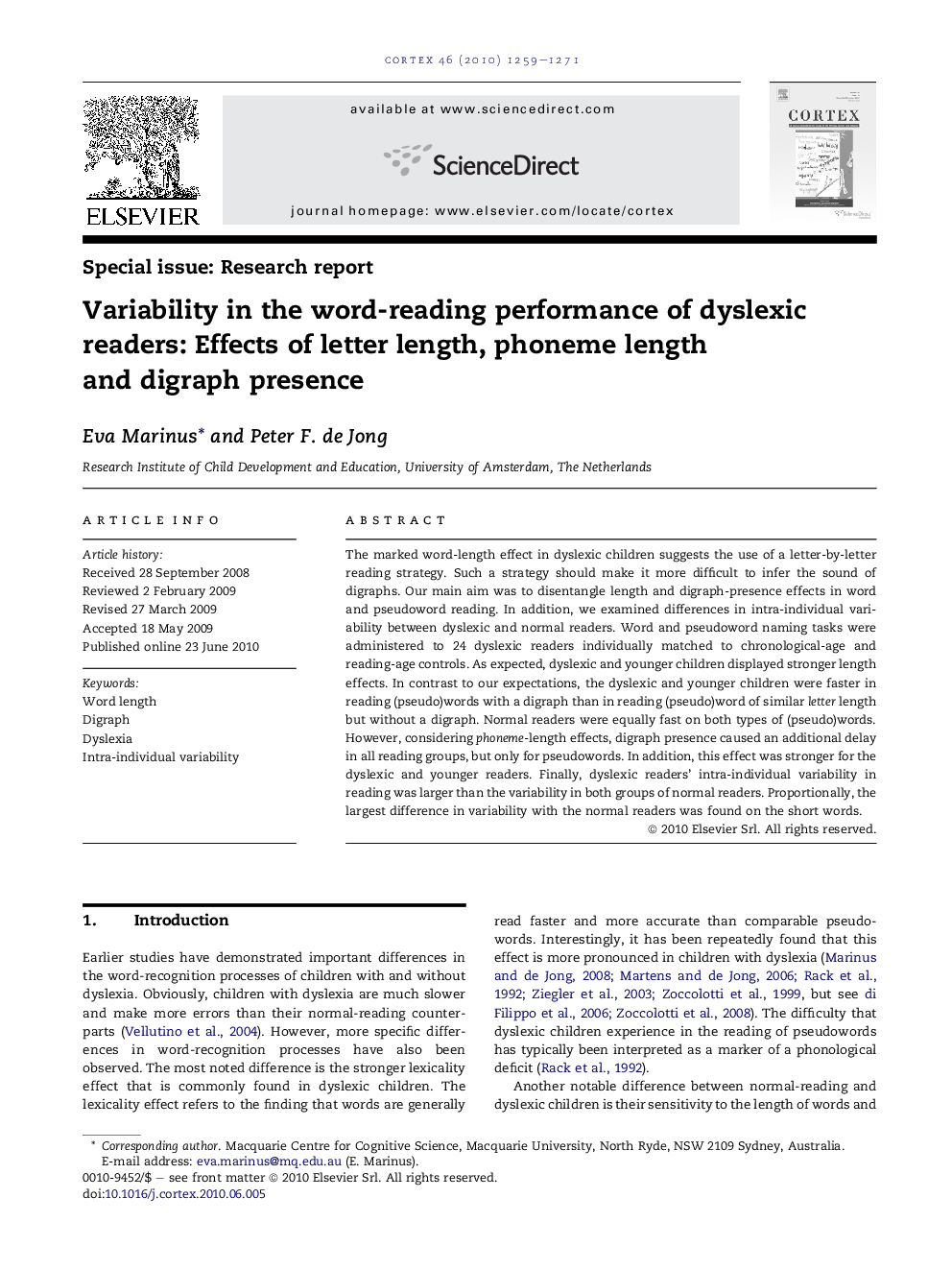| Article ID | Journal | Published Year | Pages | File Type |
|---|---|---|---|---|
| 10463348 | Cortex | 2010 | 13 Pages |
Abstract
The marked word-length effect in dyslexic children suggests the use of a letter-by-letter reading strategy. Such a strategy should make it more difficult to infer the sound of digraphs. Our main aim was to disentangle length and digraph-presence effects in word and pseudoword reading. In addition, we examined differences in intra-individual variability between dyslexic and normal readers. Word and pseudoword naming tasks were administered to 24 dyslexic readers individually matched to chronological-age and reading-age controls. As expected, dyslexic and younger children displayed stronger length effects. In contrast to our expectations, the dyslexic and younger children were faster in reading (pseudo)words with a digraph than in reading (pseudo)word of similar letter length but without a digraph. Normal readers were equally fast on both types of (pseudo)words. However, considering phoneme-length effects, digraph presence caused an additional delay in all reading groups, but only for pseudowords. In addition, this effect was stronger for the dyslexic and younger readers. Finally, dyslexic readers' intra-individual variability in reading was larger than the variability in both groups of normal readers. Proportionally, the largest difference in variability with the normal readers was found on the short words.
Related Topics
Life Sciences
Neuroscience
Behavioral Neuroscience
Authors
Eva Marinus, Peter F. de Jong,
